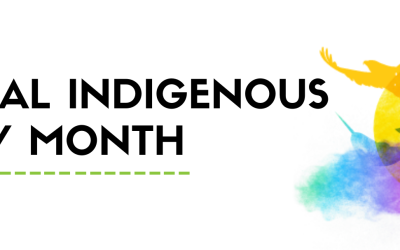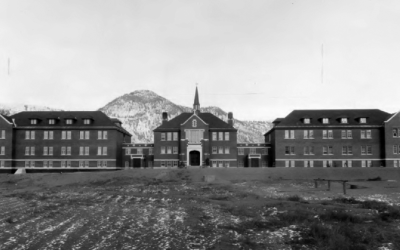“Have we reached the ultimate stage of absurdity, where some people are held liable for things that happened before they were born, while others are not held responsible for things they are themselves doing today?” – Thomas Sowell
Canadians reacted with horror to the news that burial sites had been detected by radar on the grounds of the former Kamloops Residential School. The only thing sadder than the death of a child is the death of a child far away from their home. Here we had possibly 215 children who had died far from their homes. In that respect, the outpouring of sympathy by Canadians to the dark news from Kamloops was completely understandable. But, given a report written for the Truth and Reconciliation Commission (TRC) by archeologist, Dr. Scott Hamilton had predicted this five years ago, the reaction that followed – which included the burning of churches, the toppling of statues, and the cancellation of Canada Day celebrations – was not.
Hamilton noted that the death from disease of children was far more common one hundred plus years ago than it is today. Sadly, the death of children attending residential school occurred far too often. When the TRC Report was written, only about 3200 of the deaths had been accounted for, but he predicted that many more would be discovered if proper investigation took place. (Commissioner Murray Sinclair estimated that there were at least 6,000 deaths.) The Calls to Action issued by the TRC then recommended that the federal government commit funds to do a thorough search, and the federal government responded by committing $33,000,000 for that purpose. Only a portion of that money has been spent to date, and searches are proceeding at many sites where unmarked graves are suspected.
There will certainly be more finds made over the next few years. In Manitoba, for example, it is a virtual certainty that burial sites near the grounds of both the former Brandon and Birtle Residential schools will be found. Other active searches are currently in progress in many parts of the country that will likely result in the detection of many more burial sites over the next decade.
But countless untended and too often forgotten burial sites exist in Canada from coast to coast that contain the bodily remains of people from every ethnic group. In many cases, the wooden crosses that were routinely used to mark the graves of the poor have long since turned to dust, and the cemetery sites have returned to nature. This is particularly true on Indian reserves, where tending cemeteries is not a usual cultural practice for many. And, many residential schools burned down, or were abandoned, and their cemeteries were not maintained. It is also the responsibility of individual families, and not the government or church, to provide markers and maintain graves. Not all indigenous families participate in that admittedly colonialist Christian practice. Simply put, there are unmarked graves all over the country.
All in all, given the TRC’s prediction that unmarked graves would be found at sites, including at the old Kamloops Residential School site, what is “shocking” is that the media breathlessly reported the Kamloops find as a “shocking discovery”. It appears that few of the journalists earnestly reporting on the Kamloops subject have even taken the time to read the TRC Report, or, let alone, visit the burial site.
Likewise, the many news reports about “mass graves” – implying that some kind of war crime had been committed- were false from the start. The indigenous leaders supervising the radar search had in fact made no such sensational accusation. The “mass graves” lie – repeated seemingly endlessly on newscasts – was clearly fabricated by the news organizations. This was shock journalism, nothing more, nothing less.
And, the many implications made that these deaths were somehow sinister, or that the bodies had been hidden, had absolutely no foundation. Again, all that the journalists who spread this false information had to do was to consult the TRC Report itself for accurate information. Dr. Hamilton’s portion of the Report discusses in great deal the infectious diseases of the day, and how the death of children was a sad fact of life. All Canadians suffered from these diseases. But Indigenous people suffered more than others, in part because it took generations for immunity to European-introduced infectious diseases to take hold.
The death of children far away from their parents is particularly tragic, and arguments can certainly be made that the churches and federal government did not do enough to return bodies for burial in the home community. But, it is clear from a reading of the TRC Report that many children died from disease in the nineteenth and early twentieth century, and that death at school was all too common, as it was on their reserves. But, there is no suggestion in the Report that any student was “murdered” or “starved to death” with “bodies hidden, or any of the other conspiracy theories that so many Canadians, including journalists, seemed willing – if even eager – to believe.
The problem is that the discussion about residential schools, generally, has become so extreme that even any wild theory is liable to be accepted. Recently, the head of the B.C. Civil Liberties Association advocated that all Christian churches be burned to the ground because of the residential school “genocide”, and she received support from many quarters – including lawyers and senior federal government advisers. This is a sign that the residential school discussion is almost out of control. The subject is certainly a complicated one, and much harm was done by residential schools. But there were many positives with the schools as well. The media has helped create a literal firestorm, where mistruth and half-truth control the narrative.
Arguments can certainly be made that children died unnecessarily in residential schools and that more should have been done to decrease the chances of diseases at the schools. But it is not as if no steps were taken by school authorities. For example, at some of the schools, the children slept in tents well into the cold season as protection against tuberculosis. Authorities were well aware that disease was taking the lives of too many children at the schools. But it must be remembered that these deaths were occurring during a time when the death of children by disease was a simple fact of life for everyone, and the child mortality rate in indigenous communities was very high.
All in all, the Kamloops discovery, and the many more that will follow are evidence of the short, sad life of so many poor children of all races and ethnicities in former times. However, there is absolutely no evidence of anything sinister. Children did die of disease at the schools, but far more died in their home communities. That was the sad reality of life in those times.
So, why was there such a widespread willingness to accept the worst possible interpretation? Why were the nuns who devoted their lives to the education of indigenous children been slandered in this way – to the extent that Catholic Churches have been defaced and torched, and all of the people who ever worked at residential schools defamed?
Could it be that Canada’s media have failed in their responsibility to the Canadian people?
Take for instance the claim made almost universally by all Canadian news sources that “150,000 indigenous children were forced to attend residential schools”. This claim is often combined with descriptions of children being “ripped from their mother’s arms” or “forcibly separated from their parents”. This is a grossly misleading description of the overwhelming majority of the children who attended residential schools. It simply doesn’t apply to the many parents who willingly sent their children to the school of their religion.
As explained in the TRC Report, Catholic parents sent their children to Catholic schools, and Protestant parents sent their children to Protestant schools. In fact, in many cases parents had been active in advocating for the construction of the schools for their children, realizing that a modern education was necessary for them. Compulsory education for Indians did not even become law until 1920. Many indigenous parents willingly sent their children to residential schools both before and after that time.
Many indigenous parents worked at the schools and were often actively involved in school decisions, not infrequently pulling their children out of the schools when they disagreed with how the schools were operating. In fact, it is quite insulting to indigenous parents to assume that they were helpless pawns. Many strong indigenous parents played an active part in their children’s education, and vigorously objected if they felt that their children were not receiving the proper treatment.
It is true that in the child welfare cases, where Indian agents believed that neglect (usually due to alcohol abuse) rendered the home dangerous for the child, force was used to move the child to a residential school for his or her own safety. (The Indian agent was the only “child welfare service” that existed for reserve residents well into the 1960s.) But those cases were a minority. In the majority of cases, parents were responsible, and indigenous children were no more “forced to attend” than any Canadian child after compulsory school became the law for every child.
The fact that in many years the number of indigenous children who attended no school at all exceeded the number attending residential schools puts the lie to the picture of helpless parents being universally forced to give up their children to residential schools. The reality is far more complex. Why did the media spread this false claim – CBC being the worst offender. Why didn’t competent journalists challenge the lie?
As to the canard that no good came from residential schools – only evil. This is patent nonsense. The TRC Report itself contains a section devoted to residential school graduates (they don’t call themselves “Survivors”) who speak positively about their experiences at residential schools, and credit the schools with giving them educations that enabled them to succeed – educations that were denied those left at home. Famous endorsements of residential school experiences, such as Tomson Highway’s statement that his years at residential school were “the best years of his life”! are well known. But even the person who started the criticism of residential schools, Phil Fontaine, acknowledges that “of course, some good came from residential schools”.
Why does the media not challenge claims such as those of Romeo Saganash, a former MP who claimed that residential schools were akin to the “Holocaust”. Even when Saganash was making preposterous claims, competent journalists knew that when attending residential school Saganash and his residential school hockey team members had been flown to Europe – all expenses paid – to compete in tournaments. Twice! How can it be that an extremely lucky kid who was treated like a king in Europe on an all-expense-paid junket – twice! – can get away with saying that his residential school experience was like the Holocaust? Why did every journalist sit on their hands while his laughable claim was being made?
So, did residential schools do more harm than good? Maybe. They certainly hurt a lot of people. But the individual bad priests, nuns and teachers are not representative of the great majority who believed that they were doing noble work. And, it remains an inescapable fact that the indigenous leaders of the past few generations received their educations at residential schools. The claim that residential schools caused only harm is false.
But by far the biggest whopper of all is the TRC Report’s main claim that residential schools are the cause of all dysfunction in the indigenous community. This is a monstrous lie, and the media should know it. Surely, factors such as the learned helplessness and victim mindset that fester on Canada’s corrupt reserves bear much more responsibility for the dysfunction.
How would it be possible that the 150,000 indigenous and Métis (in total) who attended residential schools permanently traumatized the millions of indigenous and Métis who have been born since residential schools came into being? It is a preposterous claim. The biggest crime in history is the Holocaust. But no one claims that every Jewish child born since that horrific event took place has been permanently maimed, and rendered dysfunctional. There are many other examples of terrible crimes and discrimination against other groups – Chinese, Japanese, Armenians, Ukrainians, to name a few – and yet nobody seriously argues that all of the descendants of the people harmed have been forever traumatized.
The TRC’s claim of “intergenerational trauma” is complete bunk. And yet, why is it that no major journalist, (with the notable exception of Conrad Black) has dared to challenge these “truths”? Canada has brave journalists. Rex Murphy dared to expose the hollowness of the “systemic racism” claim. Similarly, Barbara Kay bravely takes on the anti-science transgender claim that a man becomes a woman simply by saying so. (Her son, Jon Kay, once wrote candidly on indigenous issues, but seems to have retired from that subject). While Canada does have first-rate writers as well, none of them seem to want to ‘mix it up’ by writing candidly on indigenous issues. Too many of Canada’s media and writers write nothing at all about residential schools – leave it to the B Team, who simply repeat the same tired grievance lines dictated to them by money and power-seeking advocacy groups.
The media’s willingness – and even eagerness – to support what appears to be a clear anti-Catholic bias is also very concerning. Journalists repeatedly claim that extreme anger against the Catholic Church is justified because of the role the Church played in the residential school episode. In actual fact, that role is a complicated one. The fact that priests and nuns are buried in the same cemeteries as the children who died at the residential schools is a reminder that those priests and nuns had dedicated their lives to the task of educating indigenous children. In their minds, they were serving God – despite what is now being said about them.
The entire residential school story is incredibly complex and nuanced. It doesn’t fit a black and white stereotype.
But even the independent conservative free speech organizations have been strangely reluctant to talk objectively about residential schools – a field that should be ripe for creative journalists. The Rebel and the conservative think tanks seem reluctant to take on the subject for fear of being called upholders of genocide. True North is only now, tentatively entering the residential school discussion with its reportage of, the burial site issue. Residential schools have become almost impossible to discuss candidly. And candid discussion about the burial sites is on the plutonium end of an already toxic subject.
There are many other easily challengeable parts of the residential school story as told by the TRC (or rather, as told by the slanted summary of the TRC Report – sadly, the only part most journalists have read). So, could it be that because our best journalists have withdrawn from the field while our politicians will only mouth platitudes, the Canadian public is badly misinformed about the residential school issue? Could that explain why so many Canadians seem willing to accept the ‘insane’ theory that 215 children were murdered by a group of nuns in a Kamloops school, who then hid their bodies in a mass grave?
The toxic combination of irresponsible media, incompetent political leadership, and anti-Catholic bigotry has resulted in a national moral crisis. Most indigenous people – who are entitled to find their lost children and honour them – are being manipulated by unscrupulous people after money and power.
Canadians – indigenous and non-indigenous- deserve much better.
Brian Giesbrecht, retired judge, is a senior fellow at the Frontier Centre for Public Policy.
Photo by Noémie Cauchon on Unsplash.



